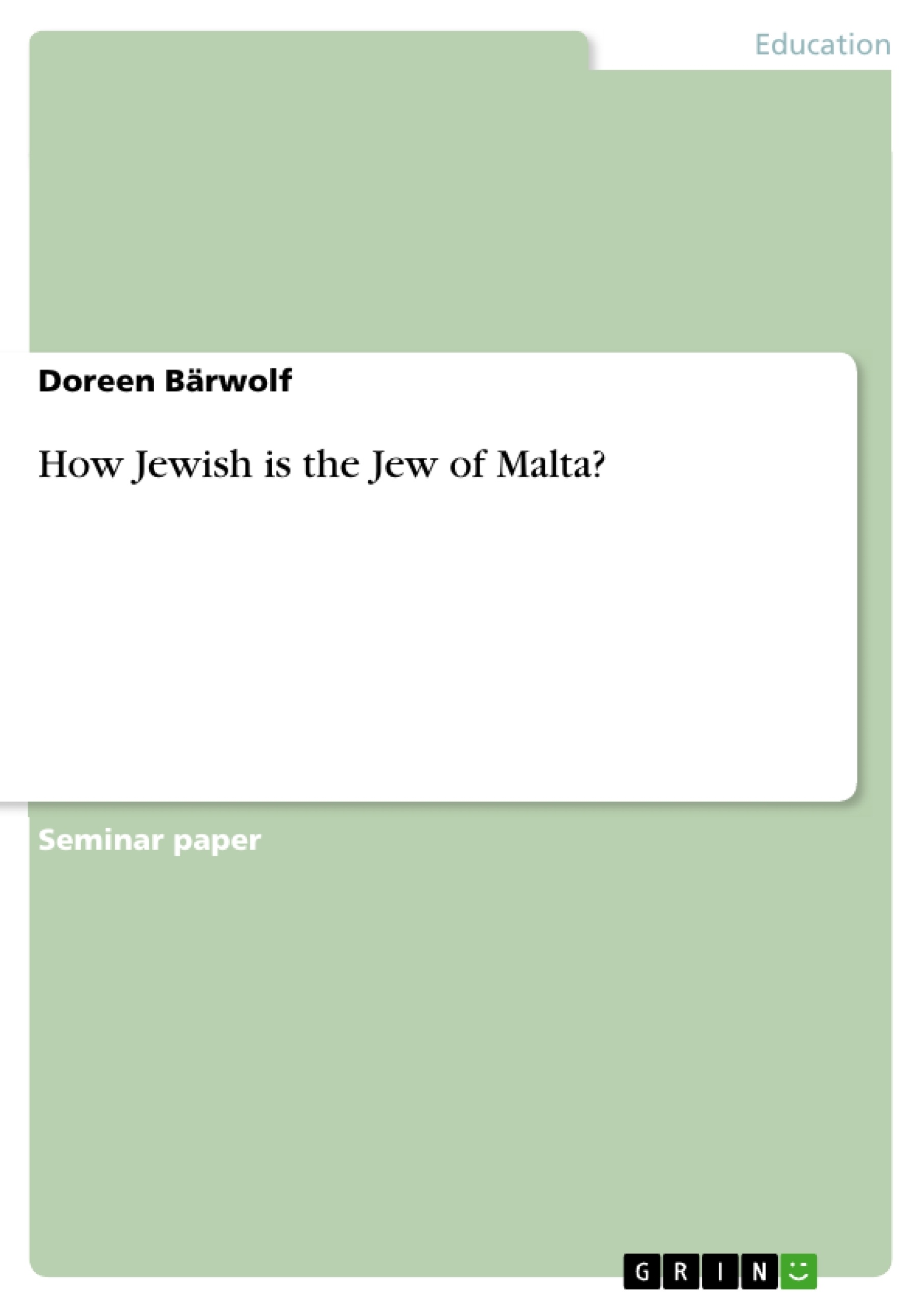Christopher Marlowe was born in February 1564 and wrote most of his plays in the 1580’s and 1590’s. One of his most famous plays written in this time is The Jew of Malta and the topic of this paper as well. This play was written around 1590 (the exact date is not known). At that time England was in a rather complicated situation in terms of religion and policy. Queen Elizabeth I. tried to change the major religion from Catholicism towards Protestantism. Furthermore the religious reformation in Germany enacted by Martin Luther had a widespread influence on every European state and also on England. The entire era between the 14th and the 16th century was a time full of changes, revolutions and reformations established in Italy, where the term Renaissance was initiated. In that confusing time a group of people was blamed for everything bad that happened and was hunted all over Europe – the Jews.
Most of the Jews came to Europe during the early Middle Ages around 1000 AD trying to find a calm place to live and to make a living by trade and craft. But after some time they developed a talent for money-trade and commerce and most of the Jewish families got rich. This was not for their advantage because most Europeans got jealous and the Jews were first avoided by the citizens of their hometowns, later even outlawed. The story of Marlowe’s Jew is strongly connected to the history of the Jews and the Renaissance period, which is the main topic of this assignment. I am going to find out how Jewish the Jew of Malta really was in connection to Renaissance history.
Inhaltsverzeichnis (Table of Contents)
- 1 INTRODUCTION
- 2 JEWS IN THE RENAISSANCE
- 2.1 SOCIETY, JEWS AND THE RENAISSANCE
- 2.2 JEWS IN ENGLAND
- 3 JEWS IN MALTA
- 3.1 HISTORICAL BACKGROUND
- 3.2 THE JEWISH COMMUNITY OF MALTA IN THE RENAISSANCE
- 4 BARABAS, THE JEW OF MALTA
- 4.1 THE CHARACTER OF BARABAS
- 4.2 HOW JEWISH IS BARABAS
Zielsetzung und Themenschwerpunkte (Objectives and Key Themes)
This paper examines Christopher Marlowe's play "The Jew of Malta", exploring the historical context of Jewish life during the Renaissance and the character of Barabas in relation to those realities. The paper delves into the history of Jews in England and Malta, analyzing the societal and religious prejudices that shaped their experience during this era. By examining the historical context, the paper aims to understand the stereotypes used by Marlowe and determine how much of the historical Jewish experience is reflected in the character of Barabas.
- The historical context of Jewish life in Europe during the Renaissance
- The role of religion and economic rivalry in shaping prejudice against Jews
- The specific case of Jews in Malta and the historical context of the island
- The depiction of Jewish stereotypes in Marlowe's "The Jew of Malta"
- The character of Barabas and his relationship to historical Jewish figures and stereotypes
Zusammenfassung der Kapitel (Chapter Summaries)
The first chapter explores the historical context of Jews in Europe, particularly in England, during the Renaissance. It highlights the economic and religious tensions that led to persecution and discrimination against Jews. The chapter focuses on the role of Jews in commerce and the societal prejudices that emerged as a result of their success in trade. The second chapter shifts attention to Malta and its historical context, analyzing why Marlowe chose this setting for his play. It examines the history of Jews in Malta and their place in the society of the Renaissance. The third chapter delves into Marlowe's "The Jew of Malta", exploring the stereotypes he employed and how the character of Barabas reflects the historical Jewish experience. It analyzes Barabas's character traits and motivations, considering the potential influences of historical realities and Marlowe's own intentions in creating such a character.
Schlüsselwörter (Keywords)
This paper examines the historical context of Jews in Europe, particularly in England and Malta, during the Renaissance. It focuses on the impact of religious and economic tensions on the Jewish community, including prejudice, persecution, and stereotypes. The key themes explored include the role of Jews in commerce, the influence of religious beliefs on societal attitudes, and the depiction of Jewish characters in literature, specifically Christopher Marlowe's "The Jew of Malta." The analysis encompasses the character of Barabas, exploring his connection to historical Jewish figures and stereotypes, as well as the potential influence of historical realities on Marlowe's work.
- Quote paper
- Doreen Bärwolf (Author), 2008, How Jewish is the Jew of Malta?, Munich, GRIN Verlag, https://www.grin.com/document/156446



